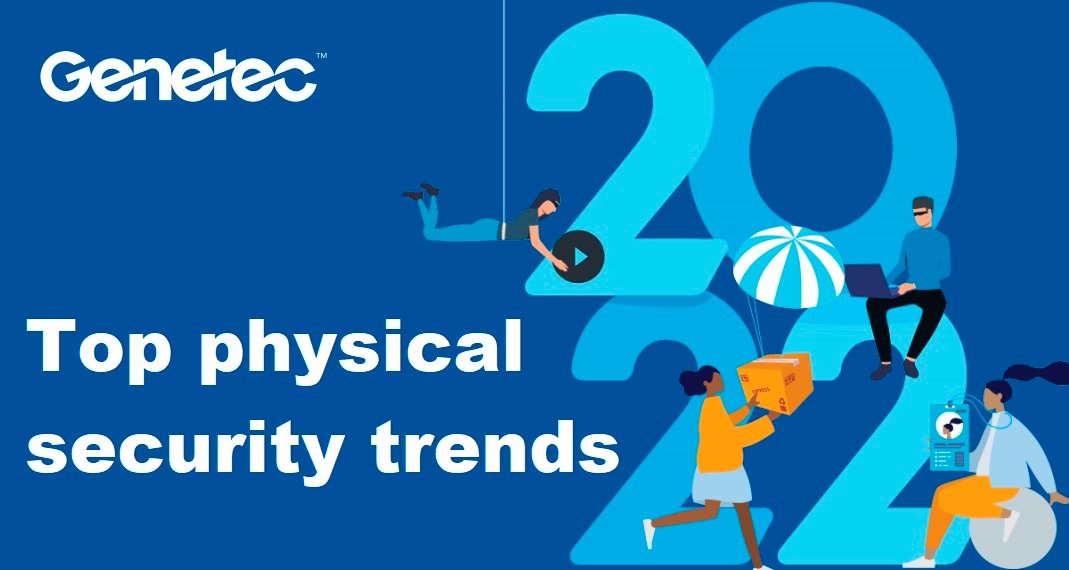
Genetec, a leading technology provider of unified security, public safety, operations, and business intelligence solutions, today shared its top predictions for the physical security industry in 2022.
 Monitoring occupancy and space utilization will remain a top priority
Monitoring occupancy and space utilization will remain a top priority
Within months of the pandemic, businesses were deploying different solutions to track occupancy in their buildings and control social distancing. Almost two years later, this trend is still growing because they’re seeing value from the data collected.
Beyond safety objectives, organizations will embrace the use of spatial analytics data to reduce wait times, optimize staff scheduling, and enhance business operations. As businesses give employees the flexibility to split up their work time between the office and home, organizations will be looking for ways to best optimize their workplaces. By using space utilization intelligence, they will be able to analyze employee office attendance, monitor meeting room demands, and make informed floorplan changes such as adding more desk-sharing options.
Video analytics will become more viable for large-scale deployments
In recent years, demand for video analytics solutions has been strong. As AI techniques such as machine learning and deep learning continue to bolster the power of analytics, more organizations are eager to invest.
However, because complex video analytics still require very powerful servers for adequate data processing, deploying analytics at an enterprise level isn’t always practical. As we move into 2022, we believe video analytics applications will mature in ways that make them easier and more economical to deploy at scale. This evolution will be made possible by vendors who focus on hardware resource efficiency and offer more granular controls for running analytics at certain intervals or schedules, instead of continuously.
Cybercrime will continue to grow and inspire new strategies
A report by Cybersecurity Ventures predicts that global crime costs will reach $10.5 trillion USD annually by 2025. With a growth rate of 15% per year, this cost is said to represent the greatest transfer of economic wealth in history.
As more devices come online and data processing becomes central to operations, businesses will need to remain agile and responsive to the evolving threat landscape. Their customers will also demand greater transparency about how they are keeping data secure and private. All of this will usher in an entirely new model for cybersecurity that relies on continuous verification rather than just hardening networks and systems.
Building layers of protection into a security ecosystem won’t be enough. Decision makers will need to implement more offensive cybersecurity strategies and choose partners who offer higher levels of automation to stay on top of potential threats.
Supply chain risks will gain more focus and attention
The supply chain issues that the world is currently experiencing will encourage businesses to be less dependent on single-source, proprietary solutions. Forward-thinking organizations will instead seek open architecture solutions that offer increased choice and flexibility based on requirements and current availability.
But there’s more to supply chain issues than the current shortage of goods and materials. As cybercriminals become more sophisticated, organizations are under greater pressure to scrutinize the cybersecurity measures, standards, and certifications of their entire supply chain ecosystem.
In a world where organizations no longer have clearly defined network perimeters, we anticipate seeing more businesses and government agencies broadening the scope of their cybersecurity policies to establish baseline security standards for the solutions they purchase and the vendors they partner with.
More organizations will make the move to cloud and embrace a hybrid deployment
As more businesses take a step towards trialing cloud applications, they’ll quickly understand the benefits of hybrid cloud, which will produce even greater forward momentum in the adoption of cloud technologies in the new year.
This could include implementing a digital evidence management system to speed up video and data sharing between different departments during investigations, deploying a cloud video management system to secure a high-risk remote location, or installing a physical identity access management (PIAM) solution to better manage access rights for all employees.
Forward thinking security leaders and their organizations will think less about how a product capability is delivered, and more about how and where they will employ this technology to improve and strengthen their security and data insights in 2022 and beyond.